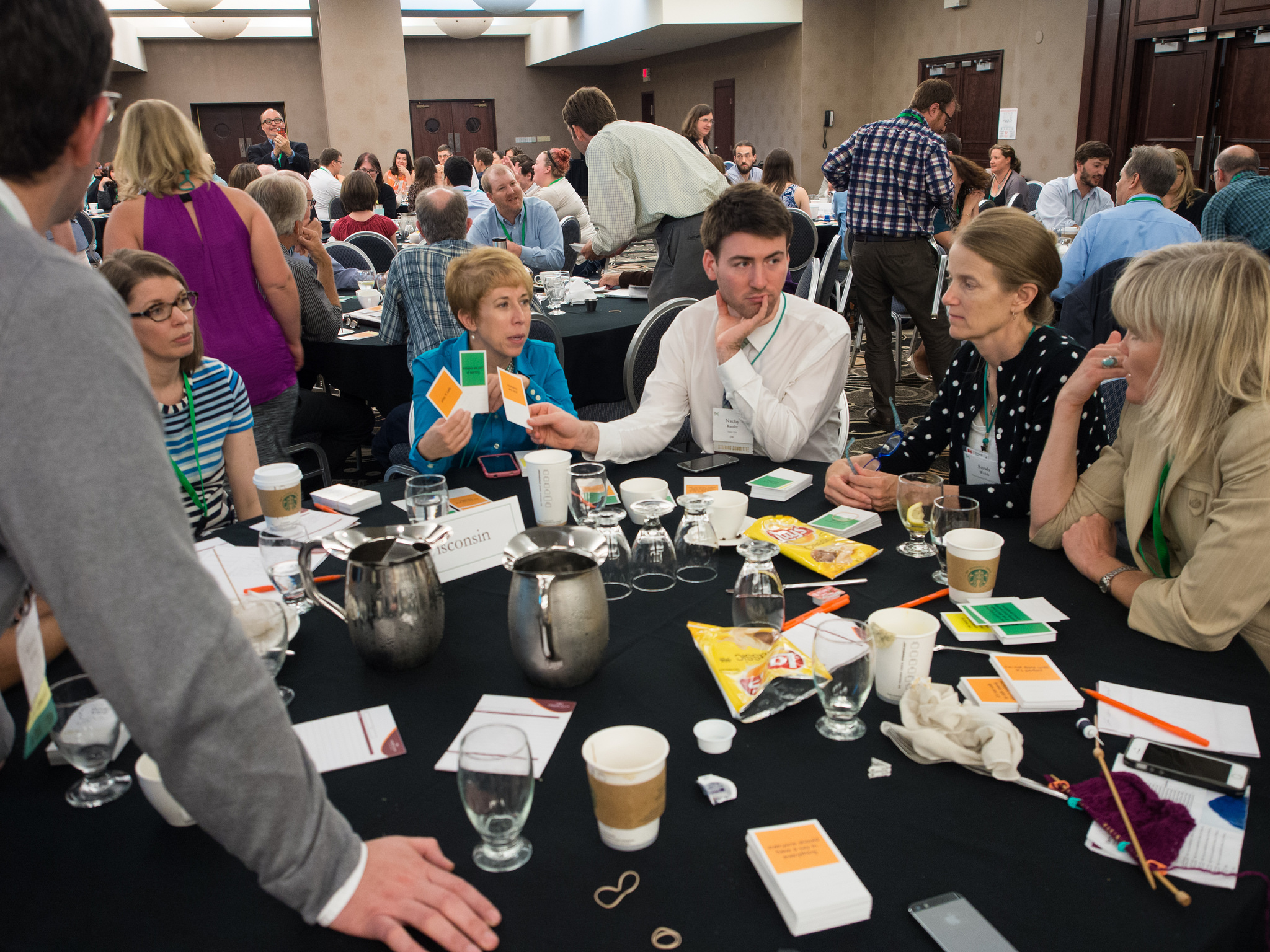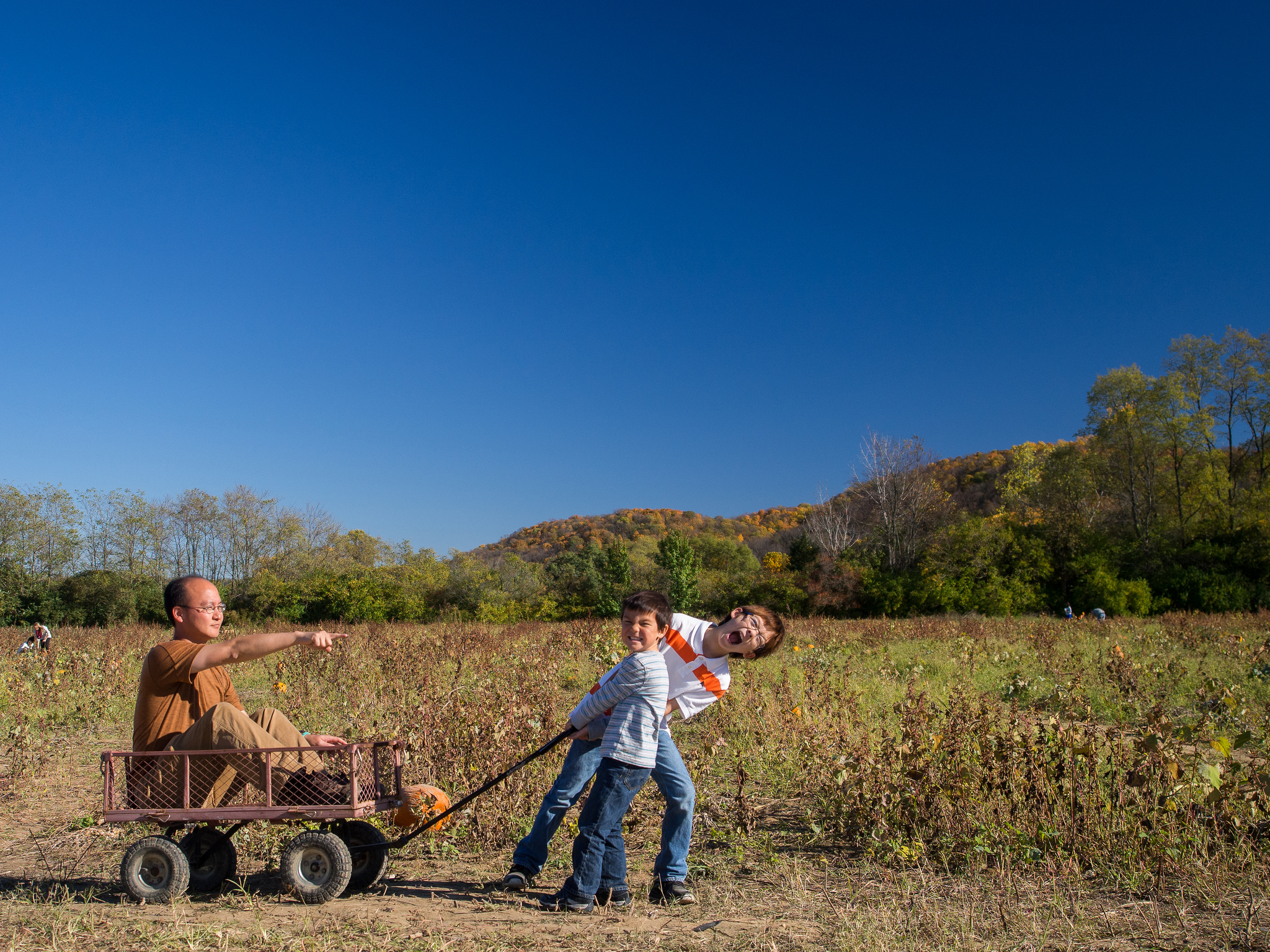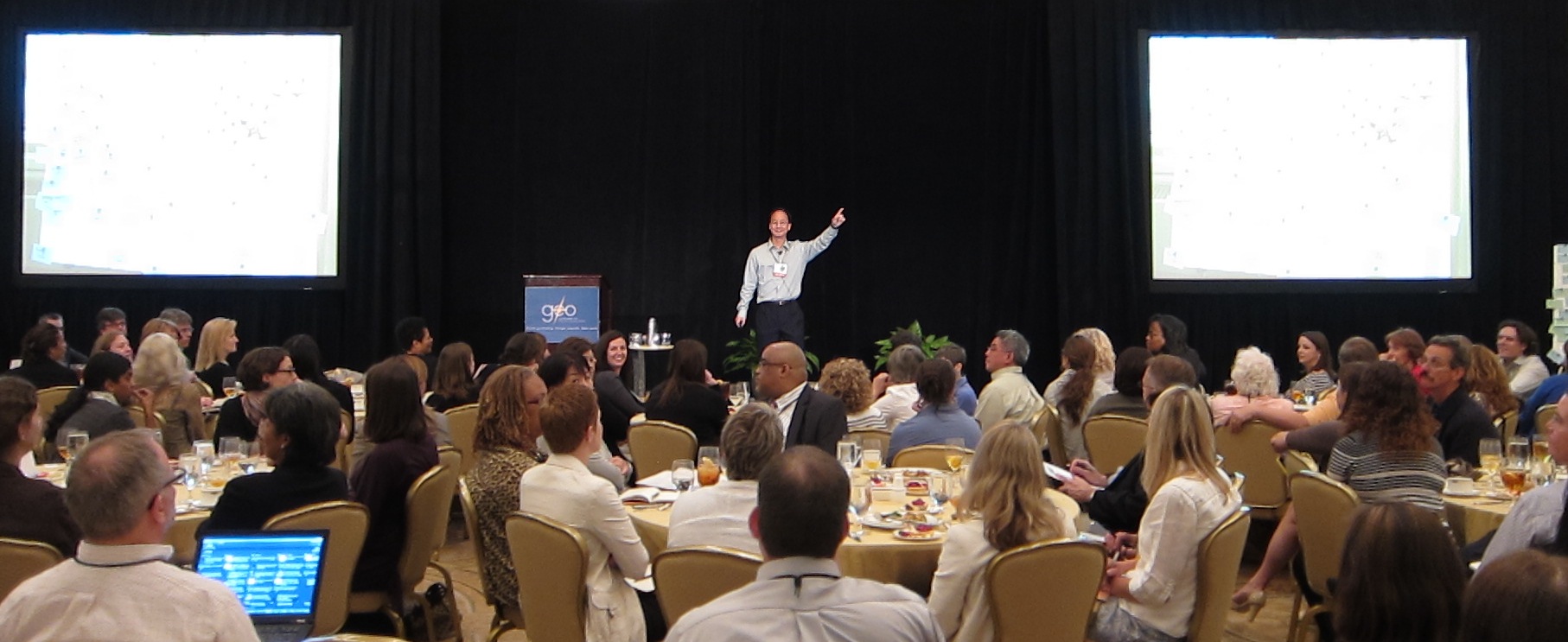

Seven years ago, a friend challenged me to clearly articulate why I do what I do. She had repeatedly heard my spiel — adopted wholesale from my mentor — about society’s problems growing more complex faster than our ability to address them and the resulting urgency to get collectively smarter faster. She understood what I was saying, but as far as she was concerned, it didn’t fully explain why I was so passionately driven by this work.
I spent many months reflecting on her question, repeatedly asking myself why, and challenging myself to go deeper. The answer finally came to me in L.A., where I was visiting my parents and younger sister. We had gone to the beach together, a family tradition since childhood, and when we arrived, as if on cue, my family immediately splintered. Everyone moved in his and her own direction, with no sense of what anyone else was doing and no coherent rhythm. I watched this lack of synchronicity unfold before me and felt all sorts of old wounds rise up within me.
I was lucky to grow up in a family with lots of love, but — like all families — we had our share of dysfunction. Some of that dysfunction felt especially jarring, considering my parents’ strongly-held value of togetherness and mutual support. As a kid, I grew frustrated over watching seemingly little things disrupt our ability to be together, especially lack of listening, communication, and self-care.
I also had the good fortune of experiencing really great collaboration with others, starting with my love for team sports. I have always been a mediocre or worse athlete, but I quickly learned that teams that practiced together and that played with heart and smarts could easily transcend any individual shortcomings, and I grew to love how it felt to do that. In other collaborative pursuits where I already individually excelled, I found that I could channel my strengths into lifting others, which led to greater success than what was possible by myself and which felt even more joyful and satisfying.
I knew what it felt like to move together in sync and with power with others, and I wanted it in all aspects of my life. I knew that the fundamentals of this wholeness were simple, but not easy, and that small, but significant gains were easily within reach for most groups. When I met and started working with my mentor in 2000, all of this came together for me. I had discovered my purpose and my passion, and I was ready to make it my life pursuit.
2016 Lessons Learned
2016 was a hard year for me on two fronts. I had spent the prior three years experimenting with this notion that the key to high-performance collaboration was practice, and I had directed all of my energies toward exploring ways to encourage and support practice at scale. I wanted to spend this past year focusing on the things I had learned that felt the most promising. My goals were to:
- Scale up my Collaboration Muscles & Mindsets program and Do-It-Yourself Strategy / Culture toolkits, while continuing to refine and improve them
- Continue to find ways to support emerging practitioners, including finding ways to connect them with each other and offering real opportunities to practice with me and each other
- Return to my consulting past by taking on a really big, really hard problem, incorporating the things I had learned over the past three years, while also telling the story of the work as it happened, so that others could learn from our successes and failures in real-time
While I did plenty of work I felt proud of, most of the things I tried did not work out the way I had hoped. More egregiously, I felt like I ended up making excuses that prevented me from trying things that were higher-risk, higher-reward. Specifically:
- In general, I was not disciplined about writing up and sharing what I was learning in the moment, which resulted in only two blog posts in 2016, compared to seven in 2015 and 30 in 2014! I published more posts in this blog’s debut in December 2013 (five) than I did in all of 2016.
- This lack of storytelling was particularly bad with my really big, really hard client project. We did good work together, and we also struggled at times. While we did the work transparently (including creating a public dashboard, synthesizing and sharing our framework for experimentation, modeling transparency internally, and inviting outside colleagues to shadow), we did not share enough context for what we were doing for others to be able to learn with us. Some of this was beyond our control, but there were other things that were simply failures on my part, including not writing a single blog post about the project.
- While I did some work toward refining and scaling up Collaboration Muscles & Mindsets and the DIY Strategy / Culture toolkits, most of it was reactive rather than proactive, and even then, I was very slow to react. I ended up missing lots of simple opportunities to spread the word and involve other people. For example, Duende, my design partner for the toolkits, created an online store where you can order the toolkits, but you can’t find that store from my website. (Voila! The preceding sentence fixed that problem! More to come!)
While I didn’t accomplish my high-level goals, I don’t want to lose sight of the good things that happened:
- Publishing blog posts is not the only thing that matters when it comes to sharing. It’s about the quality of what you share and the number and kinds of people you reach, regardless of medium. I found myself sharing and linking to my two 2016 blog posts more often than average. While I only wrote two, my colleague, Anya Kandel, became the first guest contributor here, writing two really great blog posts about her driving questions and experiences.
- In addition to writing up the aforementioned experimentation framework (which I did in collaboration with my colleague, Alison Lin), we did an accompanying webinar in partnership with Social Transformation Project and Leadership Learning Community (LLC) that had almost 400 registrants, third all-time among LLC’s excellent five-year roster of webinars.
- I published several of my collaboration workouts, with more to come. My lack of blog posts didn’t prevent my mailing list from growing, and you can now follow me on Instagram and Facebook as well as Twitter. I also made a bunch of subtle design and technical changes to this website, which will help support its ongoing growth and evolution.
- I did a Do-It-Together Strategy / Culture Workshop in New York with Anya Kandel, my first outside of the San Francisco Bay Area and hopefully the start of many more.
- I maintained the self-care success that I achieved in 2015, not a small feat considering how much work I’ve put into this over the past four years.
- I met, worked with, and shadowed lots of great practitioners, especially the aforementioned Alison and Anya, through my informal meetups, my colearning experiment and a similar experiment with my friends at MAG, and my client work.
- My client projects were meaningful, and I learned a ton from each of them. I did organizational culture work with Addapp, organizational strategy work with General Service Foundation, which included a strategy-focused Muscles & Mindsets program, and really meaningful work on network strategy and culture with Social Transformation Project, my heretofore un-blogged-about “big, hairy client project.” I got lots of practice, including designing and facilitating two unusually challenging meetings, and I identified lots of areas for ongoing improvement. In addition to having lots of new fodder to write about, I also developed lots of new infrastructure and templates that I plan on packaging and sharing this year.
It’s not that I didn’t accomplish good, valuable things. It’s that I have a larger goal that I care about, and the only way I’m going to have a chance at achieving that goal is through focus, discipline, and rapid adaptation. I’m trying to run a marathon, and while I worked hard and am in better shape now than I was a year ago, I’m not developing strength and endurance quickly enough to successfully complete that marathon.
Which brings me to the second thing that was hard about 2016, for me and for many, many other people.
There are many, many problems in the world today, and they all manifested in some very discouraging ways this past year. All of this divisiveness, siloization, and radicalization are what I and many, many others have been working so hard to shift and prevent for many, many years. These are fundamentally challenging problems, so it shouldn’t come as a surprise that it’s happening, but we can’t use that as an excuse not to be disciplined and accountable to how we’re trying to tackle these problems.
How do we know if we’re investing in the right places? Where should I be directing my energy in order to have the biggest impact?
I don’t know the answers to these questions. I do have hypotheses, and my intention has been to test them. My actions in 2016 were not fully aligned with my intentions, and I want to fix that. Which leads me to my three-year goal and my priorities for 2017.
1,000 High-Performing Collaboration Practitioners by 2020
I believe there are a set of core principles underlying high-performance, collaborative work. I believe we need lots and lots of people who understand those principles and who practice them with devotion and joy.
I practice these principles to the best of my ability, and I want to find others committed to the same principles, whether they are external practitioners trying to help other groups or internal changemakers embedded in their own groups. I want to learn with them, support them in their practice, and help the community grow and improve. By the end of 2020, I want to know of at least 1,000 of these practitioners all in movement together.
Why 1,000? Because I think that number is the minimum needed to sustain a thriving, growing movement.
Why by 2020? Because I think it will be very hard, but doable if I’m smart and focused about how I approach this, and because we can’t afford to wait any longer.
How will I accomplish this? I’m still working out the details, but I’ve got some ideas. I think there are three overlapping categories of activities needed to help catalyze this community of practitioners:
- Model these principles myself and continue to practice and improve
- Synthesize and share what I’m learning
- Nurture and support other practitioners
Most of my past activities have fallen in some subset of these categories, as is the case for similar practitioners. But I’ve realized (through experience and lots of helpful feedback from others) that there are some key activities on which many of these other activities depend. I’ve largely neglected these activities, and I want to correct that.
2017 Priority: Draft a Set of Experience-Based Principles for High-Performance Collaboration
In particular, I need to clearly and accessibly articulate the principles that I think are foundational for high-performance collaboration. Drawing on my and other’s experiences to draft these principles will be my primary focus in 2017.
I often use the metaphor of how we need more chefs. In some ways, I’m saying I want there to be 1,000 “chefs” that I know of by 2020. We can extend this analogy further to explore how we might go about doing this.
One of the reasons I decided to start consulting again at the end of 2015 was my realization that we need more “great restaurants” in order to inspire people to become “chefs.” I thought one of the highest-leverage things I could do was to be one of those restaurants. I wanted to scale up how I modeled the principles of high-performance collaboration in order to inspire others to push their own practice.
I still think we need more “great restaurants,” but I no longer think that’s where my focus should lie. I need to be clear about what I think high-performance collaboration means and what the underlying principles are. Articulating those principles will help serve as a beacon for other practitioners with similar beliefs and commitment. It will provide a framework to help assess collaborative performance — the equivalent to a Michelin Guide in the restaurant world — which is an important step toward actual improvement.
I hope to have a first draft of these principles — which I’ll pull together in an open way with the help of my community (which I hope includes anyone reading this) — by the middle of the year, at which point I’ll use it as a way of scaling up my other activities. I will continue to model and practice, but it will all be in service of articulating these principles.
I’m excited about this renewed focus. It feels true to the reason I got into this business in the first place. I know what high-performance collaboration feels like, and I’ve learned a lot about helping others achieve it. I know that others know a lot as well, and that even more people want to know and learn. I think the path for supporting these practitioners — lots and lots and lots of practice — is straightforward, but challenging, and I’m excited about re-focusing my efforts to pave this path. I believe wholeheartedly in the world that is possible if we’re successful, and I’m going to do everything I can to help create that world.


